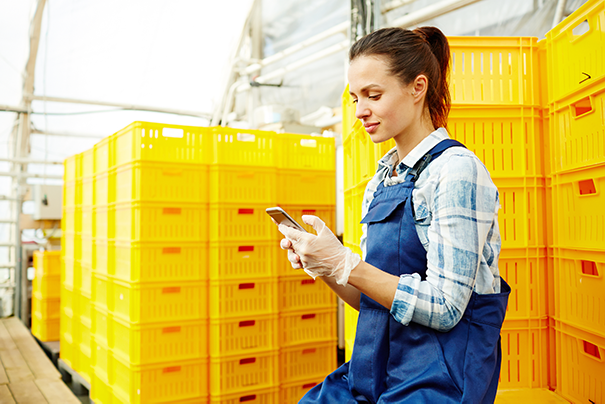Farm management software are digital tools that help growers centralize their records improve their productivity, and make better decisions for their farms. The bottom line? When you pair a grower's expertise with technology, farm management becomes easier, more efficient and more profitable. Farm management software is an example of ag tech revolutionizing the industry.

Farm management software is for growers looking to streamline their farm management practices, escape spreadsheets, and implement data-driven decision making. Farm management software can be used by large exporters and small family growers alike.
There are several key problems with keeping paper records, most notably:
Excel sheets are better than paper records, but they're not ideal for growers looking to optimize their operations. Excel sheets suffer from the following limitations:
No two farm management software platforms are alike. Some are comprehensive, while others focus on specific aspects of the farm. The following are features that you can look out for when choosing a farm management software platform.
Record keeping software can allow growers to document and track events and activities on their farms, including:
Keep your farm on track and avoid forgotten or duplicated tasks. Log what has been done where and by whom.
Yield mapping refers to the process of collecting geo-referenced data on crop yield and characteristics, such as moisture content, while the crop is being harvested. Some farm management software can be synced up with third-party sensors so that you can monitor your yield map and data on the go.
Some farm management software will include sales order processing components to help growers manage sales orders and invoices. Accurately track, monitor and analyze your sales from initial order through to dispatch and the final sales invoice. Manage products and price lists, keep track of orders, produce sales invoices and deal with returns and credit notes.
Farm management software's record storage and report generation capabilities can cut audits down from a few days to a few hours. Easy capture of traceability information helps growers manage risk and make audits a breeze. Audits allow growers to achieve food safety certification, which in turn expands market access.
High-quality farm management software can help growers track exactly which block a bin of fruit came from and who picked it. This becomes invaluable when defects are spotted or when recalls occur.
Better traceability means better food safety. Farm management software can help you meet new Food Safety Modernization Act (FSMA) standards.
Farm management software can allow growers to keep records of work hours offered, work hours completed, and work activities completed throughout the day. Compile all employees' personal records all in one easily-accessible, secure location.
Monitor what employees are working on at any time. Review productivity trends by employee or by team.
Punch employees in or out with a few taps or a simple scan of an employee badge.
Track piece rates and payouts by the employee.
Historical data stored by farm management software allow you to review how experimental programs or other conditions affect your yields over time.
Farm management software can automatically maintain an up-to-date inventory of your chemicals on-site based on your spray application and purchase records. Analyze and print reports on your chemical usage and minimize waste and disposal costs.
Some farm management applications will allow you to track your spray and chemical outputs, and even to calculate tank mixes and application rates for you.
Growers can keep track of their physical resources and their operational costs with many farm management software platforms.
Keep farm financial records and documents in one single place. Track sales, expenses and capital investments.
Farm management software systems may allow users to create alerts and notes during crop scouting for managers to review.
Some farm software platforms can link up with soil sampling probes and deliver reports on soil moisture, temperature, and fertility straight to growers smartphones.
Some farm management software platforms can link up to weather monitoring systems, so that the raw data generated by the instruments can be processed and presented to the user in an easy-to-read format.
Some farm management software can be synced with RFID sensors in packhouses in order to track the movement of products throughout the building.

Most farm management software systems can be set up quickly and easily. When in doubt, high-quality platforms will have a support team ready to help you get started.
High-quality farm management software platforms take their role as custodians of your data seriously. Look for platforms that use SSL-encrypted connections by default - this is the same level of security used by online banks. And while it is extremely rare for cloud-based data to be lost, make sure your platform executes regular backups (preferably up to multiple times a day). "Belt & suspenders backups", meaning that your data is backed up on both local servers and on the cloud, are preferable. This ensures that data is not lost in the rare event that anything happens to the local servers.
Ensure you select a farm management software platforms that recognizes you as the owner as your data. Your software system should acknowledge that you own and retain all right, title and interest in and to your data. Additionally, your data should remain yours after you provide it to the software system.
Absolutely. Most farm management software are designed to be intuitive and easy-to-use. Regardless of your comfort level with technology, look for platforms that have support teams willing to offer setup help, walkthroughs, and bug support. This is a sign of an engaged, customer-focused platform.
Many farm management software platforms are accessible on several different devices, including smartphones, iPads, and desktop computers. It's best to choose a software platform that operates on multiple device types and operating systems (e.g. iOS and Android) to accommodate the greater use of your account by decision-makers within your team, or in case you switch devices in the future.